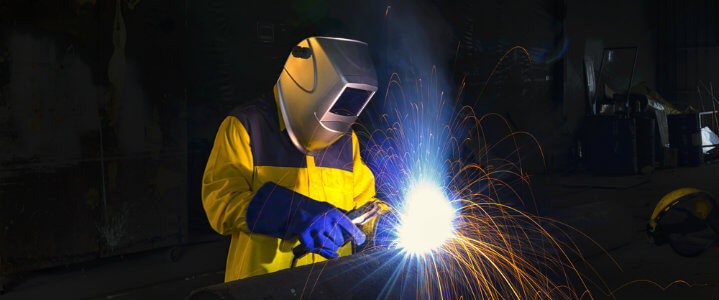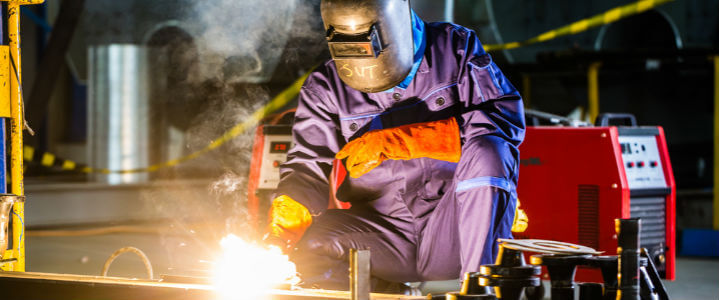What are OSHA welding safety requirements, and what’s the best way to keep your workers safe and comply with welding safety standards? This guide breaks down the weld inspection criteria and checklist components.
Understanding the OSHA Standard for Welding, Cutting, and Heating
What is considered “hot” work? The OSHA standards described here center on hot work jobs such as welding, cutting, and brazing. These jobs can be hazardous, as they pose both physical safety and individual health risks.
Half a million workers in various industries are subject to illnesses and fatal workplace injuries. It has been reported that 4 of every 1,000 of these workers in a working lifetime will die. Therefore, knowing about OSHA welding requirements is essential to being vigilant with welding inspection checklist forms.
Workplace Welding Hazards & Safe Practices
Hot work jobs are susceptible to several hazards: explosions, fires, ultraviolet radiation, electric shock, and toxic environments. Even workers who aren’t technically “welders” have to be trained to properly handle fuel cylinders, hazardous fumes, and inhalation.
Limiting worker exposure is part of OSHA’s confined space welding safety requirements. Workers’ exposure to pigments and spray paints and participation in other processes like welding or cutting stainless steel and other metals that contain chromium must be regulated.
The experts at Safety by Design are here to help if you need assistance achieving safety compliance with these regulations. Our safety staffing agency can ensure you not only pass inspection but also conduct your daily checkups and routines with precision, care, and confidence.
OSHA Welding Safety & Training
The employer must train their team to work safely with the fuel gasses in welding, cutting, and brazing. Such training requires employers to know the facts and present them. In addition, workers should understand the interactive nature of welding safety hazards.
Employers must also provide operations equipment compliant with the OSHA welding safety guidelines and conduct the required testing of that equipment using an OSHA-compliant welding equipment checklist. Furthermore, employers oversee the handling, transferring, and storing of fuel cylinders properly.
If your company could use the guidance of the best safety company in Houston, reach out to the team at Safety by Design. Our professional safety consultants make it our mission to provide quality welding, cutting, and brazing safety training for your employees and to ensure that you comply with welding area safety.

Safety Precautions to Ensure Welding Safety at Work
Consider the following list of best practices. It should be noted that our welding safety precautions below are not a comprehensive list of all things OSHA welding and cutting. Please treat it as an overview.
The Ultimate Welding Safety Checklist
These are essential questions to review before welding operations even begin to ensure welding and cutting safety.
- Have workers been briefed on the hazards unique to their specific job?
- Have workers been trained to accomplish their jobs safely?
- Have workers read the manufacturer’s instructions, MSDS’s, and cylinder labels?
- Is a fire watch on post with working fire extinguishers?
- Are the OSHA welding clothing requirements being followed? For example, are heat and impact-resistant clothes being worn? (Consider clothing that reduces burns, like leather aprons, leggings, etc.)
- Are the stored cylinders upright and secure in a separate room that’s dry, ventilated, and fireproof?
- Will cylinders be turned off after use?
- Have workers been informed never to use oxygen to blow away dust?
- Have workers been trained never to roll or drop cylinders?
- Is smoking forbidden during hot job work?
- Have workers been de-energized before they touch electrical parts?
- Do you regularly review and discuss your welding machine safety checklist documents and any posted welding safety equipment list?
- Are the OSHA welding ventilation requirements being followed in the hot work area?
- Are the objects to be welded that day separately grounded?
- Have workers been forbidden to wear jewelry while welding?
- Have workers been trained to understand which size cable with intact insulation is appropriate for their tasks?
- Is the atmosphere tested before entering and while workers are working?
- Are all surfaces checked and determined “dry” before welding operations begin?
- Has PPE (Personal Protective Equipment) been considered?
- Is proper eye protection, such as goggles, being worn?
- Are first aid equipment and safety attendants readily available?
- Have all flammable objects in the hot work area been covered or removed?
- When welding calcium, lead, and other hazardous materials, are proper respirators employed?
- Have all ducts that could potentially carry sparks been closed?
- Has a fire-resistant shield been placed over walls, floors, and other objects that could catch fire?

Safety By Design Offers OSHA Welding Training in Houston
Our SafeTeam safety management app can help you organize your relevant safety checklists. It certainly can be an overwhelming task, but this web application, along with our Houston OSHA compliance training, could play an integral part in keeping your workers safe and your workplace compliant with OSHA standards and requirements. Whether you need assistance creating a workplace injury prevention program, conducting health and safety audits, or safety program development, we’re here to help.
Schedule a free consultation today.
Tags: industrial safety tips, OSHA standards


